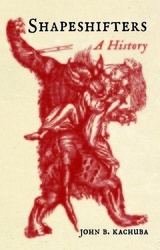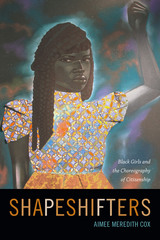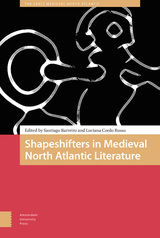3 books about Shapeshifters

Shapeshifters
A History
John B. Kachuba
Reaktion Books, 2019
There is something about a shapeshifter—a person who can transform into an animal—that captures our imagination; that causes us to want to howl at the moon, or flit through the night like a bat. Werewolves, vampires, demons, and other weird creatures appeal to our animal nature, our “dark side,” our desire to break free of the bonds of society and proper behavior. Real or imaginary, shapeshifters lurk deep in our psyches and remain formidable cultural icons.
The myths, magic, and meaning surrounding shapeshifters are brought vividly to life in John B. Kachuba’s compelling and original cultural history. Rituals in early cultures worldwide seemingly allowed shamans, sorcerers, witches, and wizards to transform at will into animals and back again. Today, there are millions of people who believe that shapeshifters walk among us and may even be world leaders. Featuring a fantastic and ghoulish array of examples from history, literature, film, TV, and computer games, Shapeshifters explores our secret desire to become something other than human.
The myths, magic, and meaning surrounding shapeshifters are brought vividly to life in John B. Kachuba’s compelling and original cultural history. Rituals in early cultures worldwide seemingly allowed shamans, sorcerers, witches, and wizards to transform at will into animals and back again. Today, there are millions of people who believe that shapeshifters walk among us and may even be world leaders. Featuring a fantastic and ghoulish array of examples from history, literature, film, TV, and computer games, Shapeshifters explores our secret desire to become something other than human.
[more]

Shapeshifters
Black Girls and the Choreography of Citizenship
Aimee Meredith Cox
Duke University Press, 2015
In Shapeshifters Aimee Meredith Cox explores how young Black women in a Detroit homeless shelter contest stereotypes, critique their status as partial citizens, and negotiate poverty, racism, and gender violence to create and imagine lives for themselves. Based on eight years of fieldwork at the Fresh Start shelter, Cox shows how the shelter's residents—who range in age from fifteen to twenty-two—employ strategic methods she characterizes as choreography to disrupt the social hierarchies and prescriptive narratives that work to marginalize them. Among these are dance and poetry, which residents learn in shelter workshops. These outlets for performance and self-expression, Cox shows, are key to the residents exercising their agency, while their creation of alternative family structures demands a rethinking of notions of care, protection, and love. Cox also uses these young women's experiences to tell larger stories: of Detroit's history, the Great Migration, deindustrialization, the politics of respectability, and the construction of Black girls and women as social problems. With Shapeshifters Cox gives a voice to young Black women who find creative and non-normative solutions to the problems that come with being young, Black, and female in America.
[more]

Shapeshifters in Medieval North Atlantic Literature
Santiago Francisco Barreiro
Amsterdam University Press, 2018
Representations of shapeshifters are prominent in medieval culture and they are particularly abundant in the vernacular literatures of the societies around the North Sea. Some of the figures in these stories remain well known in later folklore and often even in modern media, such as werewolves, dragons, berserkir and bird-maidens. Incorporating studies about Old English, Norse, Latin, Irish, and Welsh literature, this collection of essays marks an important new contribution to the study of medieval shapeshifters.Each essay highlights how shapeshifting cannot be studied in isolation, but intersects with many other topics, such as the supernatural, monstrosity, animality, gender and identity. Contributors to Shapeshifters in Medieval North Atlantic Literature come from different intellectual traditions, embracing a multidisciplinary approach combining influences from literary criticism, history, philology, and anthropology.
[more]
READERS
Browse our collection.
PUBLISHERS
See BiblioVault's publisher services.
STUDENT SERVICES
Files for college accessibility offices.
UChicago Accessibility Resources
home | accessibility | search | about | contact us
BiblioVault ® 2001 - 2024
The University of Chicago Press









